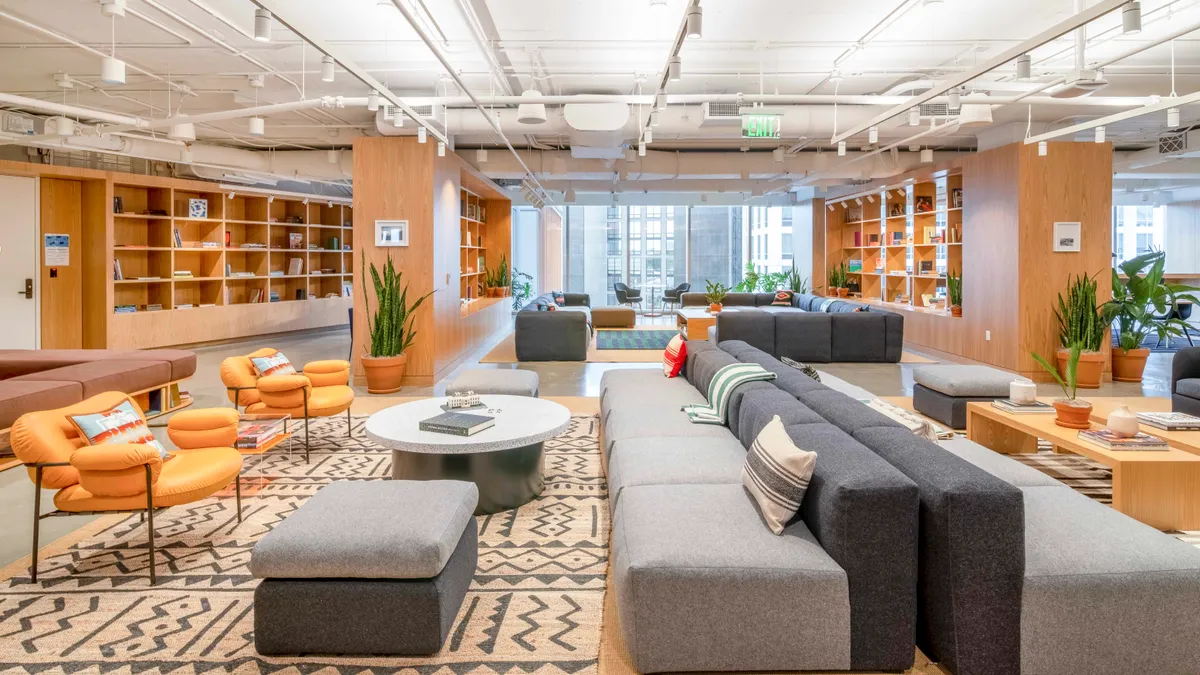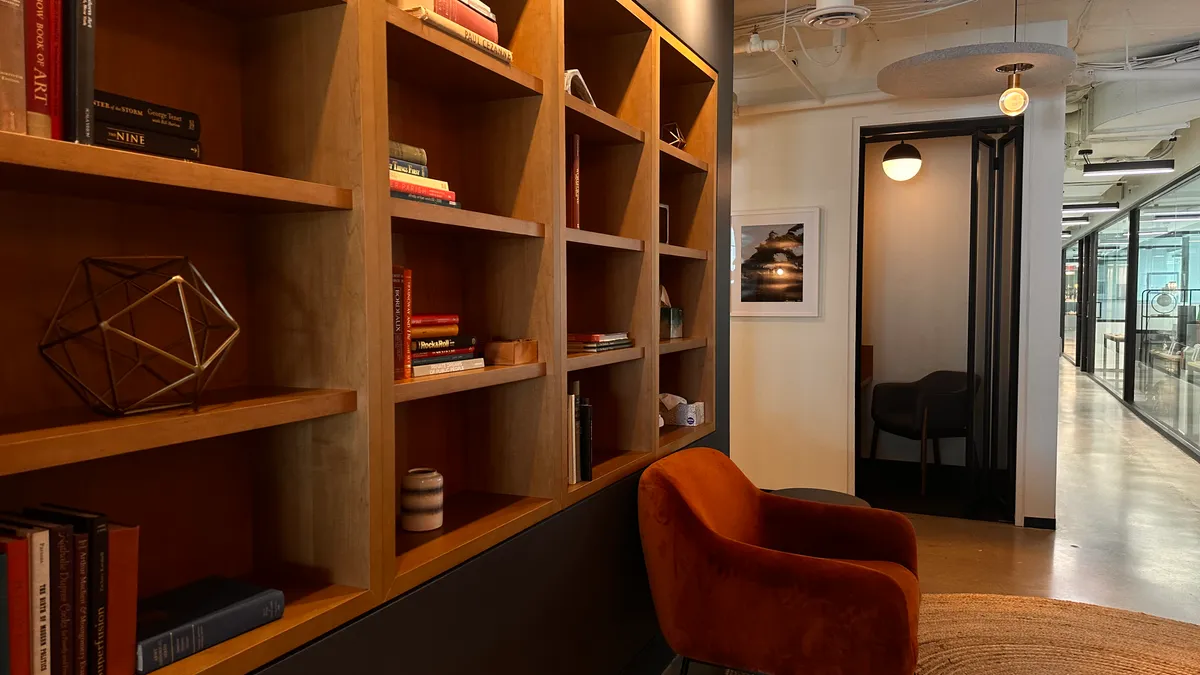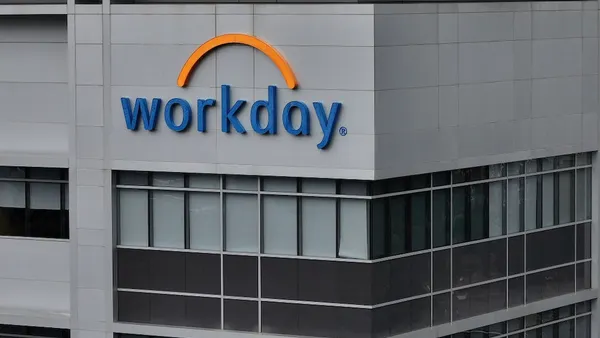Editor’s Note: This column is an installment in Caroline Colvin’s Office Space series, where they examine the future of work through the lens of “office space” — and whether pursuing a physical workplace is even worth it anymore.
In the wake of WeWork’s Chapter 11 bankruptcy filing, CEO Sandeep Mathrani’s words from earlier this year are particularly poignant.
Mathrani spoke to the advent of digital-first workflow, which caused a “centuries-old standard way of working [to be] flipped on its head.” He reflected on a 2020 interview he gave on flexibility and the future of work. Since that interview, Mathrani said, WeWork built up its “product suite to adapt to the seismic shift in the industry,” so the company could “further capitalize on all areas of demand with our physical space product of real estate.”
Fast forward to August 2023, when it turns out WeWork’s Q2 earnings results may have been smoke from a larger fire. In the liquidity section of the report, the company expressed that “substantial doubt exists about the company’s ability to continue.”
Regardless of whether knowledge workers like it or not, in-person work seems overwhelmingly like it’s here to say: more than 90% of employers will have executed an RTO plan by the end of 2024, according to a 2023 ResumeBuilder report. However, whether the workplace middlemen — global names like WeWork, Industrious and Regus, or smaller, regional entities like the Coven — are valuable for employers is up for debate.
How WeWork plans to save itself
Per the earnings report, WeWork’s game plan to improve profitability and liquidity going forward included the following:
- Reduce tenant costs and rent by renegotiating leases.
- Work on member retention to increase revenue.
- Tighten up on business expenses.
- Secure more capital overall.
I reached out to WeWork prior to the bankruptcy filing, asking for comment regarding the Q2 liquidity statement. The spokesperson assured me that the language of the statement was in step with the accounting world and its jargon, and the statement was phrased as such to err on the side of caution.
The liquidity report didn’t take into consideration the company’s improvement plan, they said.
Noting that the nation’s capital was slower to come back than more social cities like Miami, WeWork’s spokesperson told HR Dive their company remained committed to the Washington, D.C.-Maryland-Virginia area.
In the flexible space industry, an optimistic outlook
A month and a half after the Q2 earnings report, I toured one of WeWork’s Washington, D.C., offices for another snapshot in my ongoing series on office spaces.
WeWork’s senior leasing director for the Mid-Atlantic region, Dave Belford, reiterated that flexibility is the key service that the company provides employers. “Our CEO famously said, ‘The time is now for WeWork,’ and that couldn’t be more true,” Belford told HR Dive. “Because as more and more uncertainty is out there — in terms of whether it's an economic scenario — we have the ability to help those companies take a look at their real estate portfolio, and match their needs in real-time.”
Like the HR experts interviewed before him, WeWork’s leasing director spoke about the biggest challenge of return-to-office mandates: Creating enough allure to make workers want to be in community with each other in real life, or in Belford’s case, “helping companies draw people back.”
The light-focused spatial design, positive energy and variety of moods and purposes for spaces strike the right balance to entertain a host of different clients, including the healthcare, law, tech and political industries common to the city, he suggested.
Belford’s tour and discussion of the benefits of flexible office space was reminiscent of speaking to Adam Finch, Industrious’ area manager for the DMV region. Like Belford, Finch had underscored the ways coworking spaces rival traditional offices with their extra layer of hospitality; warm minimalist pizzazz; and overall fun but utilitarian environment.
Both spaces followed the covetable formula: soft communal seating balanced with stoic private rooms, teeny spaces for one and conference rooms for a whole board, puzzles as a conversation starter, an enviable coffee bar and baked goods as a “watercooler” draw.
From a business standpoint, one of the allures of coworking spaces Belford mentioned to HR Dive was WeWork’s “ability to liaison with landlord partners.” Belford spoke about issues with utilities; in my conversation with Finch, he had mentioned liaising with landlords for more off-site or happy hour space.
Looking back from Q4 2023, the company's Q2 earnings results arguably indicate that the fire may be larger than originally surmised.
Big picture: What WeWork’s Chapter 11 filing signifies
Following the bankruptcy announcement, a WeWork spokesperson told HR Dive that leadership’s goal is to continue to provide clients with a high-quality and seamless experience for its employees. The filing doesn’t change WeWork’s commitment to its members, the spokesperson said.
Regarding my D.C. coworking case study, the spokesperson reconfirmed that the area is a key market for the flexible work company.
“Our commitment to the city is unwavering as we continue to work collaboratively with our landlord partners,” the spokesperson said. The company “[aims] to craft solutions that set all parties up for sustainable success.”
Before the future of work fearmongering begins, Isaac Marcushamer, veteran bankruptcy attorney and founding partner at DGIM Law, stressed that WeWork filing for bankruptcy doesn’t necessarily mean that the office is doomed.
Marcushamer noted that he “doesn’t have a crystal ball,” but drew a parallel to the “Dot Com” bubble bust. “The internet didn't go away. It pivoted and changed,” he told HR Dive. “This may be the first iteration of a significant pivot in the coworking space, to a slightly modified business model.”
Looking at the bankruptcy documents, he assessed that WeWork is following traditional restructuring protocol.
“These are typical things that any company that has filed for bankruptcy is going to be doing,” he said. “There's a reasonable prospect that WeWork will emerge… as a leaner, tighter corporate operation that potentially is on the path to profitability.”
Some points that Marcushamer highlighted: WeWork renegotiated more than 500 leases before filing, reduced debt by an “astronomical sum” of almost $12 million and whittled down general overhead. WeWork also reached a new agreement with most of its creditors regarding the company’s debt.
“That tells me they've been working on this for sure for weeks — if not, months,” he said. Whether the bankruptcy filing came before business leaders or the market expected, Marcushamer can’t say.
“But very clearly, this was not a crash landing,” the bankruptcy attorney added.
Profitability has typically been secondary to growth in the tech and VC space, Marcushamer observed. This bankruptcy filing could simply signify a shift to finally prioritizing profitability over growth.
“Given the nature of office — which is lagging or relatively depressed compared to other asset classes in real estate, in various markets — I suspect landlords are pretty happy to keep someone paying rent even if it's less than it was,” he said. “I suspect this isn't going to be, overnight, the end of coworking.”
Correction: An earlier version of this story quoted statements from a WeWork spokesperson that should have been paraphrased. We have updated the story.

















